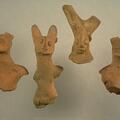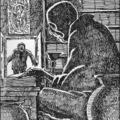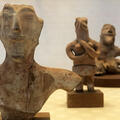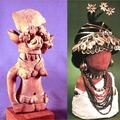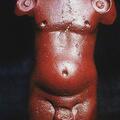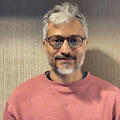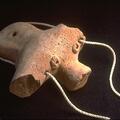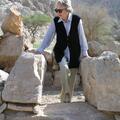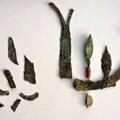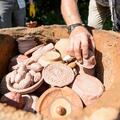Men of Harappa B
Male figurines are sometimes also identified by secondary sex characteristics such as beards. Occasionally, male figurines wear a headdress with two upward and/or outward projections like horns. Similar figures with horned headdresses are found in the iconography of seals, tablets, and pottery. It is possible that these represent composite figures with anthropomorphic and animal attributes or the appropriation of animal attributes in the form of a headdress. In addition to different postures, male figurines also exhibit a variety of hairstyles.

